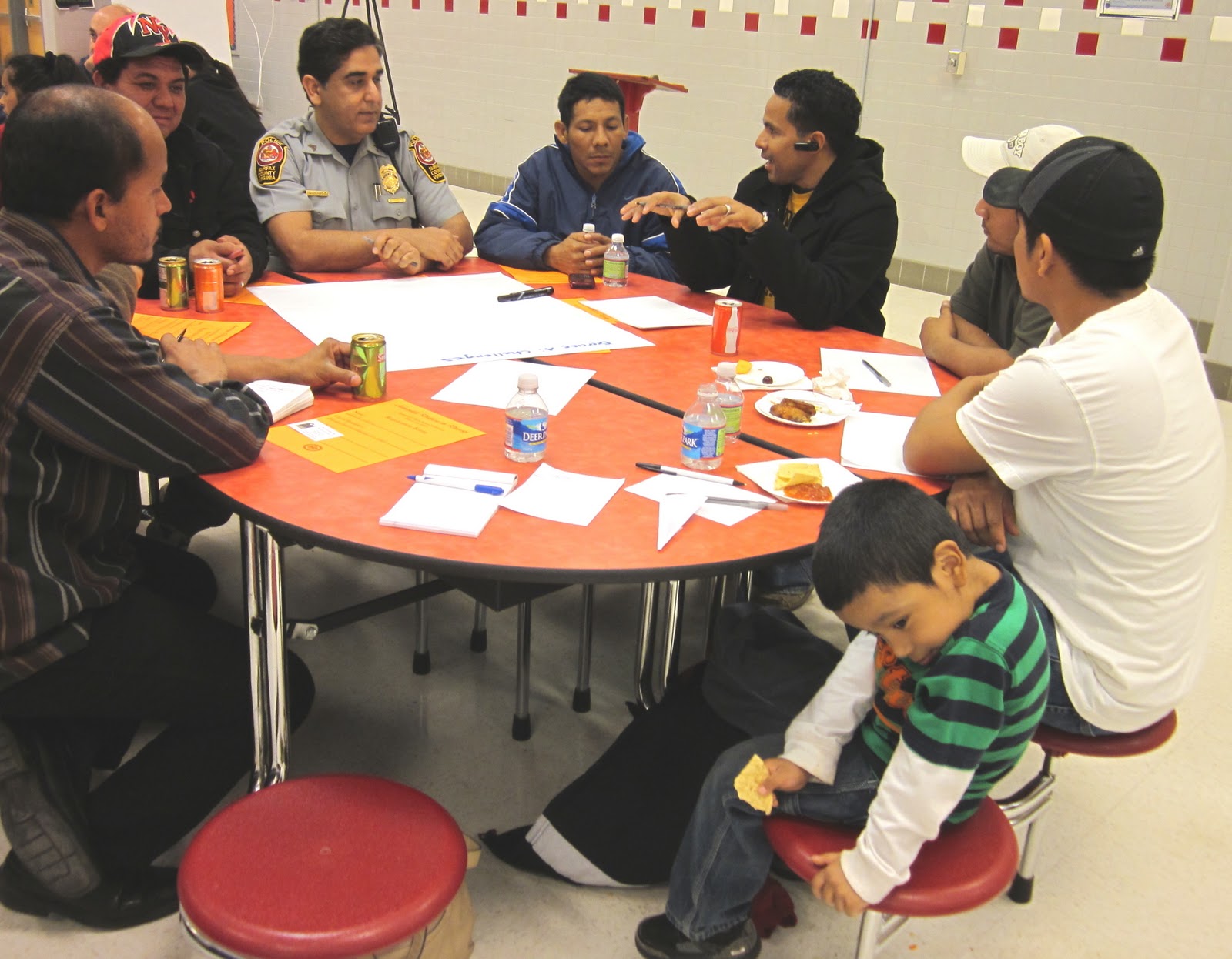Neighborhood groups hope to engage people from diverse cultures
 |
| Annandale residents took part in a dialogue on diversity last spring at Annandale High School |
With Fairfax County becoming increasingly diverse, neighborhood groups are finding it sometimes difficult to recruit volunteers that reflect their communities. As George Klein, vice chair of the Braddock District Council of Community Associations, put it. “We need to better engage people from diverse cultures, and we need help to deal with this.”
The Braddock District hosted a recent forum to address these issues. Michelle Gregory, division director of Countywide Service Integration and Planning Management in the county’s Department of Neighborhood and Community Services, set the stage by presenting an overview of demographic trends:
- More than 1 million people live in Fairfax County, and another 63,000 are expected to move here within the next 10 years.
- Both ends of the population spectrum are growing—young people and older adults—which is straining county resources.
- Among people in Fairfax County born in other countries, 50 percent are from Asia, 30 percent are from Latin America, 10 percent are from Africa, and 9 percent are from Europe.
- The top five languages (other than English) spoken by elementary school students at home are Spanish (spoken by 42 percent of children from non-English speaking households), Korean (8 percent), Vietnamese (7 percent), Arabic (6 percent), Urdu (4 percent), and Chinese/Mandarin (4 percent).
- As more poor people move out of cities to suburbs, they are dispersed throughout a wide area, which means services have to be offered in different locations.
- Poverty in Fairfax County is defined as an income of $22,000 or less for a family of four.
- The income gap is widening, and it’s become more difficult to move up the economic ladder.
- A lot of the housing around here was built before 1990 and does not meet the needs of the elderly.
- The quality of health in Fairfax County is good but older adults lack health insurance at greater rates than older adults elsewhere in the country. That’s likely due to the large number of immigrants who haven’t worked here.
Darryle Craig, manager of the Fairfax County Public Schools’ College Success Program, offered tips on “cultural competence,” which she defined as “the ability to interact effectively with people from different cultures.”
Cultural competence is important because so much of what goes on in schools and workplaces has to do with interpersonal relationships, and if one is not sensitive to other people’s backgrounds and perspectives, it’s easy to inadvertently offend them. Craig identified four stages of cultural competence: awareness, curiosity, learning, and participation.
It’s not just about race and national origin. “Culture” relates to many other factors, such as intergenerational differences.
Craig gave an example of cultural competence—or the lack thereof—relating to people’s names: Sometimes a teacher will shorten a foreign child’s hard-to-pronounce name or use a nickname. That is demeaning and inappropriate, because a name is a key part of a person’s identity. She suggested teachers instead ask children what their names mean and what they are called at home.
Calling someone “wheelchair bound” could cause offense, she said, because people with disabilities often feel using a wheelchair gives them independence and freedom. And even though some women call each other “girls,” that’s offensive when coming from someone else. “Don’t let that be a conversation stopper,” Craig said.
Making derogatory remarks about food from other countries also shows a lack of cultural competence, she said. Walking into a break room and saying, “eww, what’s that smell?” is insulting. It’s also important to know what’s happening in the world. That will help you understand why, for example, there are a growing number of refugees from Sudan in your child’s class.
Everyday interactions are the perfect place to start practicing cultural competence. Craig advised the audience to acknowledge peoples’ presence and practice simple courtesies, such as saying “good morning” and holding the door open.

